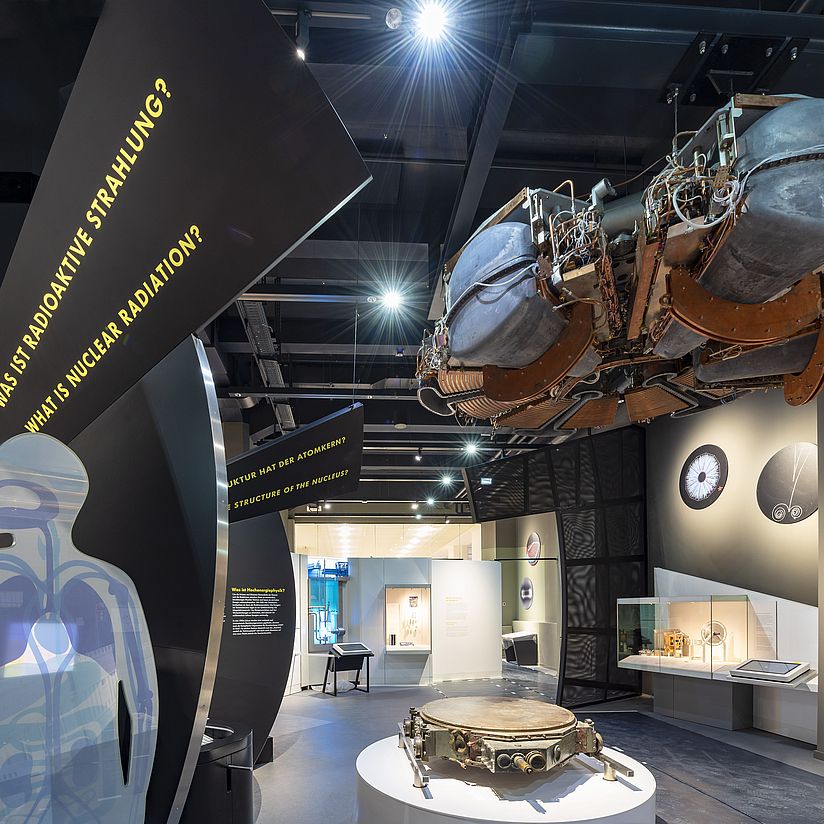
Photo: Deutsches Museum, München | Hubert Czech
Atomic Physics
Everything revolves around the nucleus
Welcome to the world of the smallest particles! Atomic physics has had a decisive influence on the 20th century. It is the basis of many technical developments that are part of our world today. The exhibition shows how physicists came to the knowledge about the structure of atoms and what opportunities and risks result from it.
A counterclockwise tour leads into the interior of the atom. The central questions here are: What is radiation? Do atoms really exist? How is an atom built? What is quantum physics? What are elementary particles? What is the structure of the atomic nucleus?
At the center of the exhibition is a so-called nuclear body as an experimental area. Here, interactive demonstrations allow visitors to find their own answers to elementary questions from atomic, nuclear and particle physics.
“Atoms are very small and you can't put them on display. Instead, we show how you can get to the bottom of the composition, appearance and properties of atoms. Visitors can do their own experiments on this or marvel at the original experimental apparatus of the pioneers of atomic physics,” says Christian Sicka, the exhibition’s curator.
Facts and Figures:
Location: Level 1
Exhibition area: approx. 270 sqm
Exhibits and models: 67
Media stations: 9
Demonstrations: 16
Stagings: 3
Highlight: The Laue apparatus
In 1913, the Laue apparatus demonstrated that X-rays consist of electromagnetic waves. The X-ray diffraction method used here is still used today for crystal structure analysis. This means that it can be used to determine where the atoms are located within a molecule. Among other things, the structure of DNA (the molecule that carries hereditary information) could be deciphered in this way. The original apparatus of Max von Laue (1879-1960) has been part of the collection of the Deutsches Museum since 1921.
Download the Press Release
PM_Atomic_Physics.pdf (PDF 15 MB)
